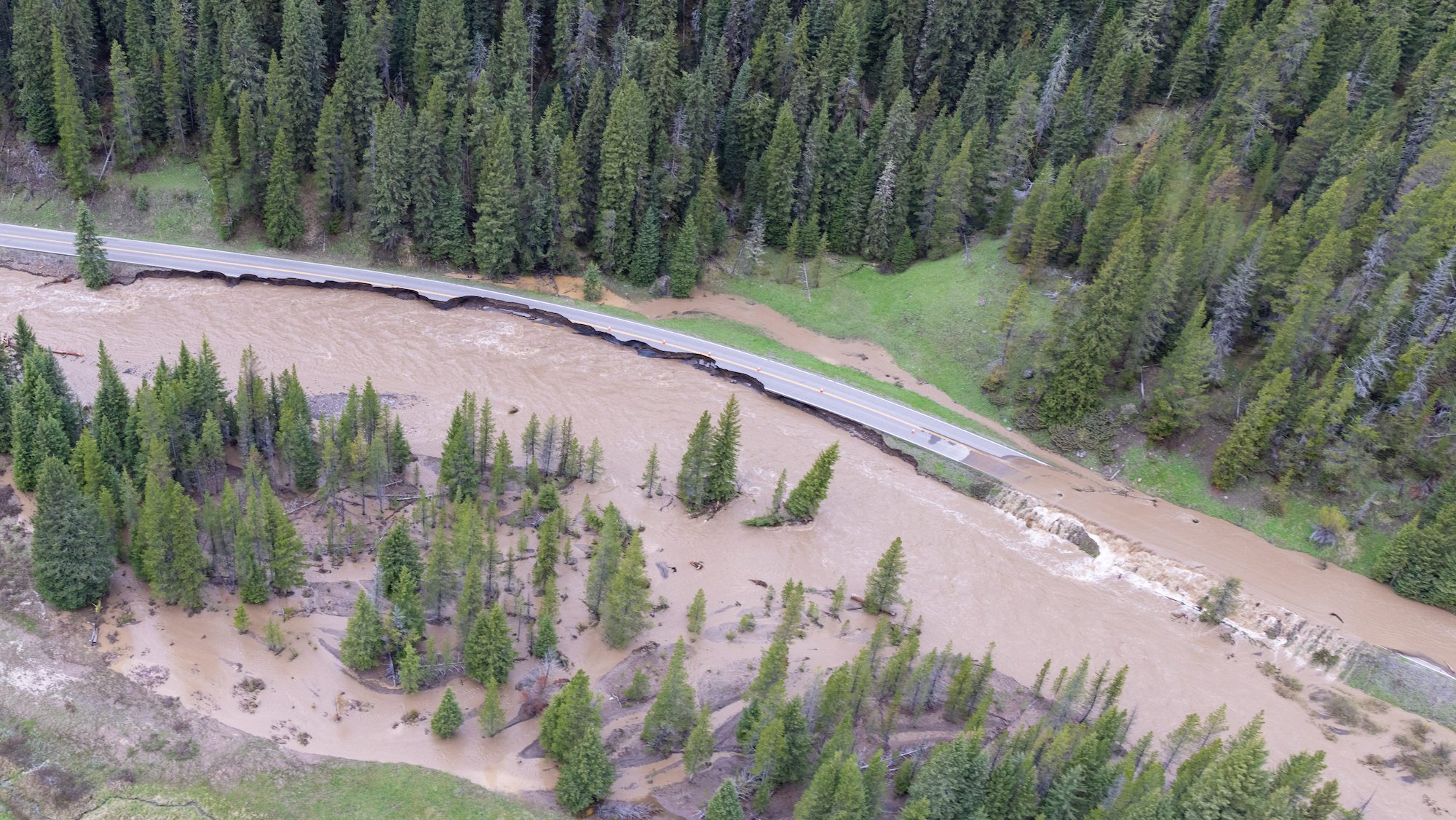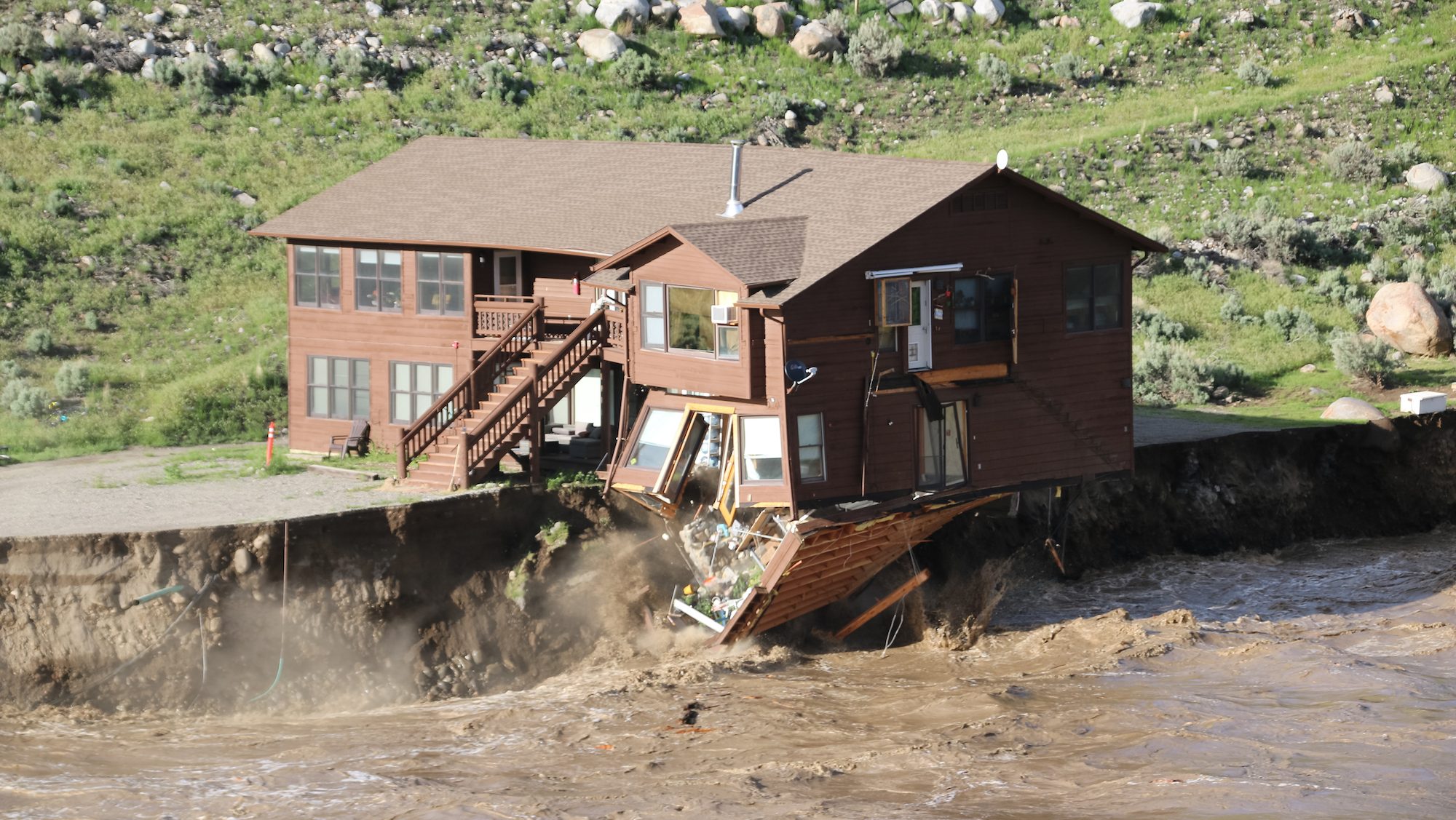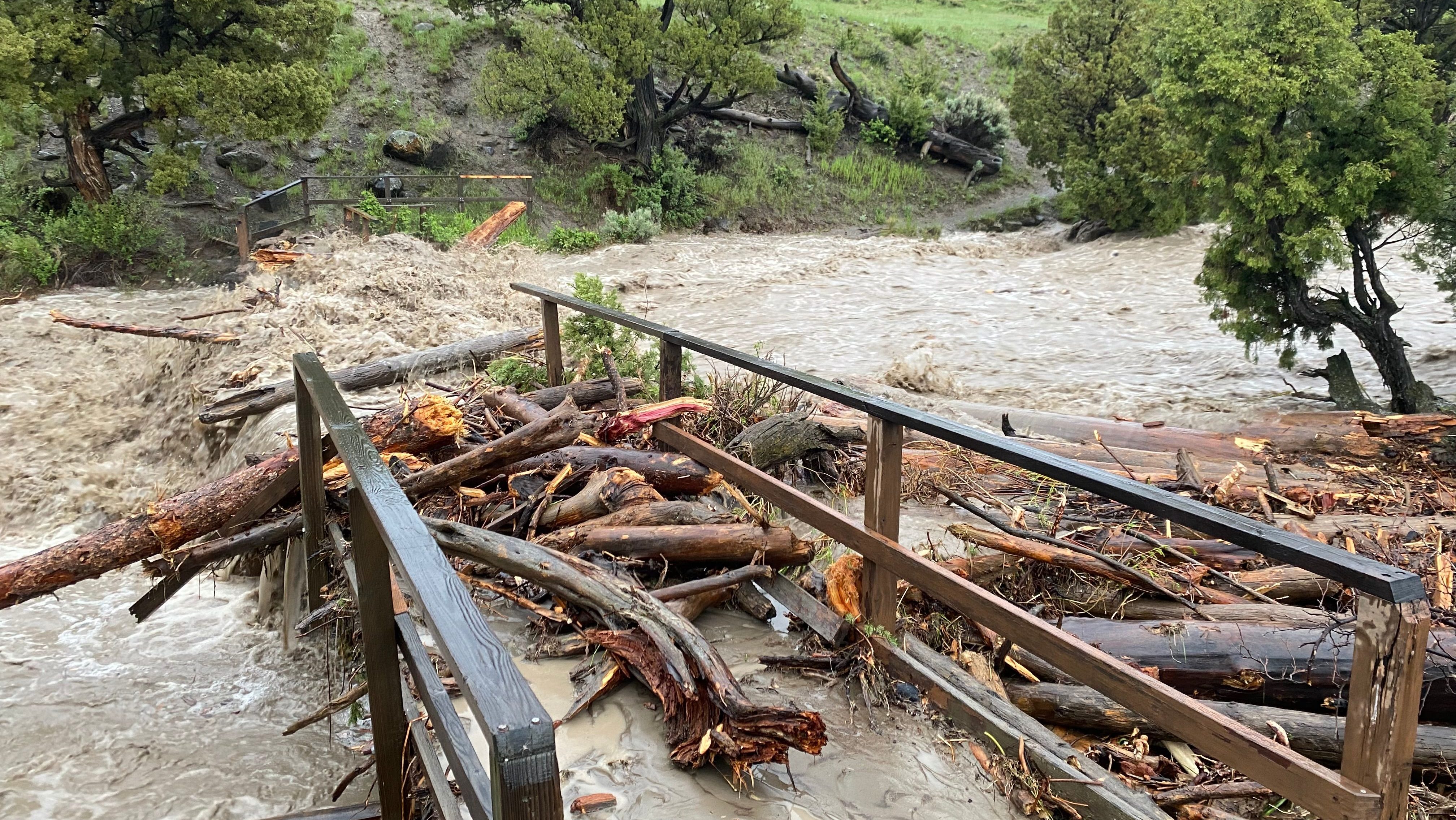It didn’t just rain. It poured. For hours. And those hours were unusually warm, dumping massive amounts of spring moisture on top of melting winter snowpack. Storm conditions for the perfect disaster hovered over the Greater Yellowstone Ecosystem in June 2022 and the brunt of it convened in the unregulated, wild watershed of Yellowstone National Park.
“Due to record flooding events in the park and more precipitation in the forecast, we have made the decision to close Yellowstone to all inbound visitation,” said Cam Sholly, Yellowstone National Park superintendent on June 13, 2022, the day flooding erupted. “We have multiple road and bridge failures, mudslides and other issues.”
The 500-year flood came from nearly ten inches of rain and snowmelt in 24 hours. It was humanity at nature’s mercy as highways crumbled, buildings sunk and people evacuated. During the peak of the park’s wash away, panic ruled then the water dropped and worry set in. Worry for most everyone but Jeff Dillon.
“There’s a lot of clean up and a lot hand wringing over the impacts to fish,” says Dillon, a fisheries biologist for 32 years at Idaho Department of Fish and Game. “But fish are resilient. Fish make a lot of babies for a reason. From a biological perspective, they’re going to rebound.”

Lessons from the South Fork
Dillon says that with confidence, the kind of confidence earned with experience. He was an eastern Idaho fisheries biologist during the Snake River flood of 1997. He witnessed, and worked through, the torrential mess that soaked its way across the Snake River Plain nearly three decades ago with catastrophic chaos similar to Yellowstone in 2022.
Both floods happened in June. Both floods flirted with epic volume, surging from well under 20,000 cubic feet per second (cfs) to nearly 50,000 cfs. But unlike undammed Yellowstone, there are dams in eastern Idaho that helped hold back some of the flow. Not much, but some. Despite that, damage took a severe toll in both cases.
“When you look at the river as it’s taking roads and dragging trees, it looks awful,” Dillon says. “Problem is people build too close when it’s controlled and then it turns uncontrolled so when the flows subside it looks stark. Trees tipped over. Side channels high and dry. The South Fork looked scarred. It looked like something bad had happened out there.”
And it had for us, but not necessarily for the wild. Fish were in the watershed long before us, and long before dams. Fish evolved with flooding. Flooding is part of the planet’s natural cycle, a necessity in many cases for proper function.

Floods sort gravel, sift sediment, shift islands and sprout seeds, especially cottonwood trees on the South Fork of the Snake River. When that cycle spins into drowning, we might not know what to do, but the fish do and Dillon has proof.
He had trackable tags in several dozen South Fork fish in 1997. It was the department’s first attempt to study the impact of non-native rainbow trout on native cutthroat trout. He suspected rainbows were cutting in on the cutthroats.
Now we know they are, but back then the possibility was an unknown and it needed investigation. A team of researchers, including Dillon, were studying fish movement in 1997. They were looking for species overlap in spawning beds when the flood happened.
“It was quite fascinating to see those fish weather the storm,” he says. “They just find a spot to get out of the worst of it and hunker down. When the flood passes they get on with their business.”
“They maybe moved over to the shoreline, but mostly they were not inconvenienced by high flows,” he continues. “Water quality goes down. It’s turbid and trees and other stuff are floating down the river, but the fish just moved a bit to the side and they were fat and happy. They were not displaced. When it came time to make spawning runs they made them.”

Healthy, Chunky Fish
One of the oldest sites surveyed in the state for annual fish population counts is the South Fork of the Snake. The fall survey of 1997 showed no noticeable difference in number of fish. And even though bugs (fish food) did experience substantial losses short term, the fish surveyed that year didn’t look hungry. They looked healthy.
The same is holding true in Yellowstone one year after the park’s 500-year flood.
“Some of your favorite fishing spots are gone or look different than they did before,” says Todd Koel, Yellowstone National Park native fish conservation program leader. “And fish densities were down after the flood, but the condition of the cutthroats was amazing. They’re healthy, chunky fish.”
There are new log jams and gravel beds in the park. New roads and bridges too. The former helps the wild. The latter helps us. Nature, in all its horrific magnificence, intrigues us. Shocks us and scares us too, but most of all it humbles us. Yellowstone sustained a major rearrangement in 2022, just like the South Fork did in 1997, but both still exist much to our collective relief.




Join the Discussion